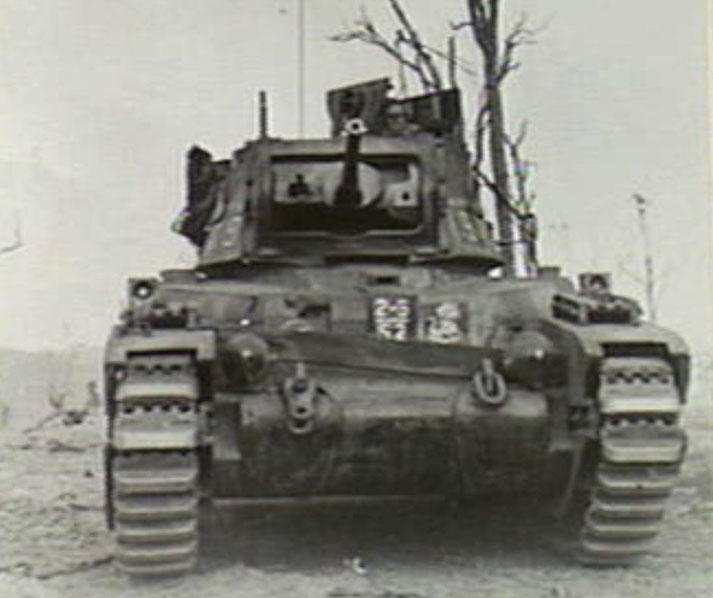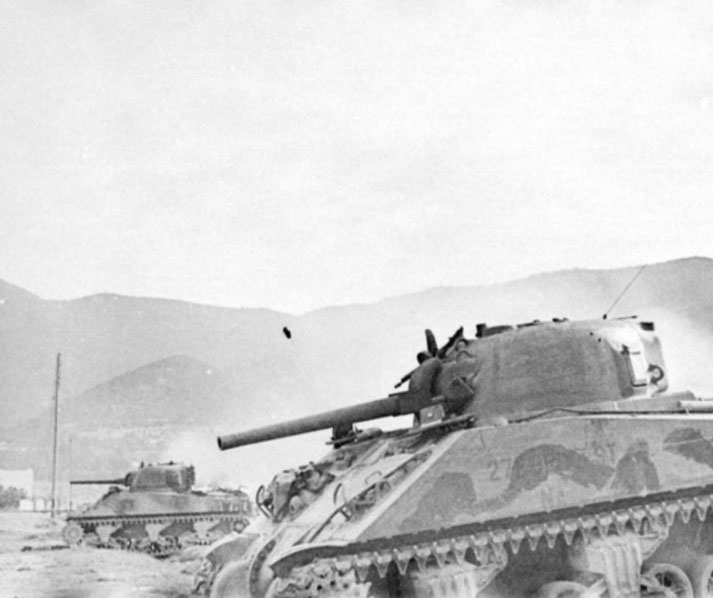What was it like to fight inside a WWII tank?

Throughout the 1940s, dark steel behemoths roamed the battlefields of Europe, Africa, and Asia, terrorizing the armies they encountered.
As harrowing as the experiences of their victims were, have you ever wondered what it was like to fight in the claustrophobic confines of a World War II tank?
The intense heat, deafening noise, and terror of combat in these armored vehicles was a daily nightmare faced by the unfortunate souls who manned these tanks.
Common types of WWII tanks
The battlefield witnessed a diverse array of tanks from the countries involved.
Each one had its own unique capabilities and design features, as well as weaknesses.
The American Sherman tank, for example, was known for its versatility and reliability.
It became a workhorse for the Allied forces, with over 50,000 units produced.
The Sherman was not the most heavily armored or best-armed tank in the conflict; however, its speed and mechanical reliability gave it an edge in many combat scenarios.
On the other hand, the German Panther tank was a truly formidable opponent.
Its combination of a powerful 75mm gun and thick frontal armor made it one of the most feared tanks of the war.
Nevertheless, the Panther suffered from some critical mechanical issues and was more complex to produce than the Sherman.
Consequently, it was produced in smaller numbers.
Then, the Soviet Union's T-34 tank was famous for its sloped armor and robust design.
It was surprisingly effective against most of the German tanks it encountered.
In fact, the design of the T-34 was considered quietly revolutionary. It combined firepower, mobility, and protection in a way that was unmatched at the time.
The T-34 would go on to influence future tank development.

Who was in a WWII tank crew?
Typically, tank crews consisted of around five members. The tank commander was the leader that was responsible for making strategic decisions and coordinating with other units.
In addition, he also served as the gunner's assistant, by helping to load the main gun when required.
Then the driver, who was positioned at the front of the tank, maneuvered the vehicle through the challenging variety of battlefield terrains.
This role required an immense amount of concentration and skill: particularly when they had to navigate under fire while maintaining a line of clear communication with the commander.
Next, the gunner, as you can probably guess, primarily operated the tank's main weapon. His job required him to both aim and fire accurately.
This was often very difficult under stressful conditions; the sudden movement of the tank in motion, or obstructed vision from smoke and poor weather conditions, only complicated the picture.
In addition to these roles, there was the loader, who manually loaded ammunition into the gun.
This was a very physically demanding job. Finally, the radio operator, who often doubled as the machine gunner, handled communications between other tanks in the same unit.
This position was vital for coordinating constantly changing tactical movements and for relaying orders back and forth.
Ass teamwork and coordination among these crew members were essential for survival and effectiveness on the battlefield, the best crews became more effective the longer they worked together.
The grueling experience of life inside a tank
Life inside a World War II tank was incredibly challenging. At the outset, crew members had to learn how to endure the cramped and claustrophobic conditions for extended periods.
This is because the interior of a typical tank, such as the American Sherman, was a confusing maze of machinery, with little room for the crew to move comfortably.
What made things worse was that temperatures inside could soar to over 100 degrees Fahrenheit on the worst days.
This sweltering environment could disable entire crews from heat exhaustion or dehydration.
In addition, the continual roaring noise inside the tank was overwhelming.
Most of the time, the tank’s sat, uncovered, next to the crew compartment.
There was very little to muffle its sound as it strained to move the machine along the ground.
This constant din made communication difficult, requiring crew members to use headsets or shout to be heard.
In addition, the smell of hot engine oil, accumulated sweat, and cordite added to the uncomfortable atmosphere.
This was both physically and mentally taxing experience day-after-day.
Life inside a World War II tank was certainly not glamorous.
The chaos of combat from inside a tank
The day of combat was even more intense and harrowing, but experiences could vary a great deal, depending on where the battles took place.
All terrains had their own lethal combination of minefields, anti-tank obstacles, and simple difficult terrain.
But also, at any given moment, they faced constant threats from enemy tanks, anti-tank equipped infantry units, and bomber aircraft.
As a result, the stress of combat was immense. However, each challenge required crew commanders to be versatile and prepare for battle, no matter what it involved.
For example, one of the most significant tank engagements of the war was the Battle of Kursk in July 1943.
This clash between German and Soviet forces remains one of the largest tank battles in history: it involved around 8000 of tanks on both sides.
For the individual members of each tank's crew, they would have no concept of the sheer scale of this encounter.
Their view was limited to the smoke and cannon fire immediately in front of them.
Across the six weeks of the battle, the tank crews simply tried to survive the relentless onslaught of enemy fire.

In comparison, the deserts of North Africa, the open terrain favored maneuver warfare, and tank crews had to adapt to fighting in the scorching heat and blinding sandstorms.
However, the vast distances also made logistics a nightmare. The German Afrika Korp in particular had to retreat on a number of occasions due to a lack of fuel and ammunition.
Then, on the Western Front, the tank crews involved in the D-Day landings on June 6, 1944, faced a very different challenge.
Tanks were tasked with supporting infantry advances and helping to breach German defensive lines.
At the Battle of the Bulge in December 1944, American tank crews faced a surprise German counteroffensive in the Ardennes Forest.
In particular, the harsh winter conditions added to the difficulties faced by the crews, as they struggled to keep their machines operational in the freezing cold.
The constant struggle to keep your tank operational
Even when they were not fighting for their lives, tankers had to be resourceful.
Tanks were machines and were prone to regularly breaking down. As a result, the crew often improvised repairs, or even modifying their vehicles, under very challenging conditions.
For example, in the North African desert, crews would affix sand shields to their tanks to prevent the machinery from clogging with sand.
This simple adaptation could mean the difference between staying mobile and being stranded in scorching, hostile territory.
By contrast, in the bitter cold of the Eastern Front, survival took on a different meaning.
Tank crews had to contend with temperatures that could plummet to -40 degrees Celsius.
So, to keep their engines from freezing, the men would often keep them running throughout the night.
Unfortunately, this practice required a constant supply of fuel.
The constant threat of enemy fire also necessitated adaptations in tactics and equipment.
Tank crews learned to use the terrain to their advantage, seeking cover and concealment to reduce their vulnerability to anti-tank weapons.
They also applied additional armor plating to their tanks, a practice known as "up-armoring," to provide better protection against enemy shells.
Ultimately, the ability to modify and improve their tanks in these ways gave crews a sense of control and confidence in an otherwise uncertain environment.
For many, these may have directly contributed to their lucky survival at the end of the war.
What do you need help with?
Download ready-to-use digital learning resources
Copyright © History Skills 2014-2025.
Contact via email
With the exception of links to external sites, some historical sources and extracts from specific publications, all content on this website is copyrighted by History Skills. This content may not be copied, republished or redistributed without written permission from the website creator. Please use the Contact page to obtain relevant permission.





